Japanese Breakfast: 4 Unique Menu Items That Originated In Japan

Despite popular belief, a Japanese breakfast doesn't merely consist of miso soup, grilled salmon, and white rice. There are morning menus that go beyond basic items, including the tamagoyaki sandwich, pizza toast, and koppepan. We introduce some unique variations of the Japanese breakfast.
Beyond Basic Japanese Breakfast Items
What do Japanese people typically eat for breakfast? Perhaps a bowl of rice topped with raw egg? Or maybe natto (fermented soybeans)?
In fact, there are many variations of what makes a Japanese breakfast. Even sandwiches or koppepan (Japanese bread roll) have far too many flavor varieties to keep count. Since being introduced to the market, these beloved types of bread continue to develop interesting flavor combinations.
In this article, let's find out more about these original breakfast offerings that originated in Japan!
Japan's First Coffee Shop
Does Japan's first coffee shop bear any connection to a person named Tei Seiko?
After the fall of China's Ming Dynasty, descendants of the Tei family found employment in Nagasaki as interpreters and diplomatic positions for generations.
One of those descendants was Tei Eikei, a well-educated man who was fluent in Chinese, Japanese, and English. In 1888, he opened Japan's first coffee shop in Tokyo called Kahiichakan.
When the coffeehouse began its business, imported products had no applicable kanji characters, so the word kahii (可否) took on the meaning for coffee. Afterwards, the kanji 珈琲 (coffee) was used to represent this now-beloved brewed beverage.
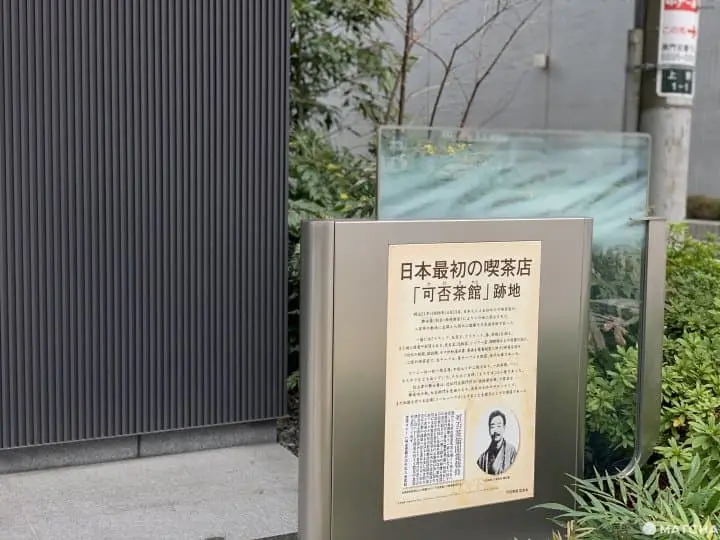
Kahiichakan is located within walking distance of Ueno Station.
At the time, the coffeehouse was housed inside a two-story, Western-style building. Customers could be seen playing traditional Japanese board games such as go and shogi. There was even an extensive book collection from every country in the world. Tei Eikei wanted his shop to be a gathering place where information and knowledge could be exchanged among common people.
Unfortunately, the coffee shop closed within five years due to financial difficulties. But it has left behind a longstanding legacy as a pioneer of Japan's coffee shops.
While the actual building no longer remains, a monument was erected in its place to honor this nostalgic venue. The white, fog-like motif on the large sheet of glass represents steam arising from a freshly brewed cup of java (see photo above).
1. The Coffee Shop Morning Set
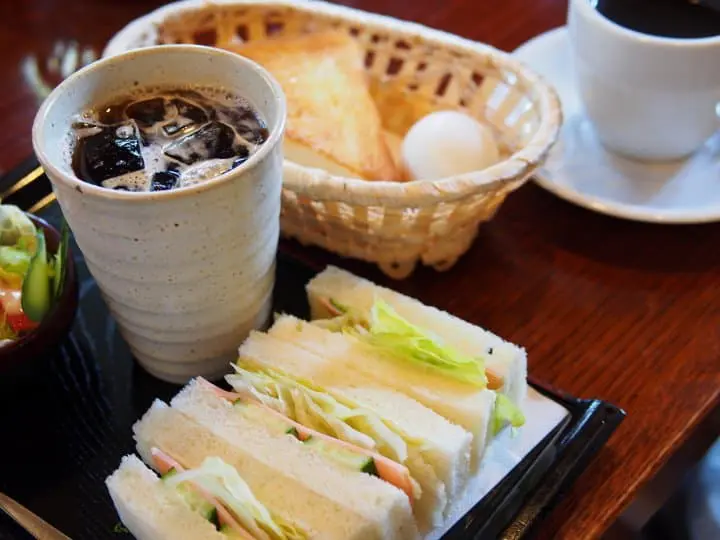
Picture courtesy of Pixta
This breakfast service, which often goes by different names, originated in various Japanese prefectures including Aichi, Gifu, and Hiroshima.
In 1955, a Hiroshima coffee shop called Ruhe Brazil began serving a "morning service" that was featured in a famous weekly magazine. Following this publicity, an increasing number of coffee shops began offering similar breakfast menus.
A Morning Set typically consists of a drink and a piece of toast. Another variation includes a beverage and toast along with a hard-boiled egg and salad. From the coffee beans, the thickness of bread, to the way the eggs are cooked, the menu can differ slightly among eateries.
Nowadays, you can enjoy this breakfast service at most coffee shops throughout Japan.
2. An Egg Salad Sandwich That Fills You with Happiness!
As Western-style dishes began gaining popularity in Japan, the humble sandwich reportedly made its debut in 1892. They were apparently sold as ekiben (packaged lunch boxes sold at train stations) in the coastal town of Kamakura.
One of these signature Japanese sandwiches is the katsu sando (pork cutlet sandwich). Invented by a tonkatsu shop, it's been said that this sandwich was dished out to Japanese geiko (geisha apprentices) in the past.
Today, we would like to introduce the egg salad sandwich. This dainty meal is easy to eat in the morning and highly nutritious.
The egg sandwiches in the Kanto and Kansai region are made from different recipes. The filling for a Kanto-style egg sandwich is usually made by first mincing a hard-boiled egg into small pieces, then adding mayonnaise. In contrast, the Kansai-style egg sandwich contains a thick omelette in between two slices of bread.
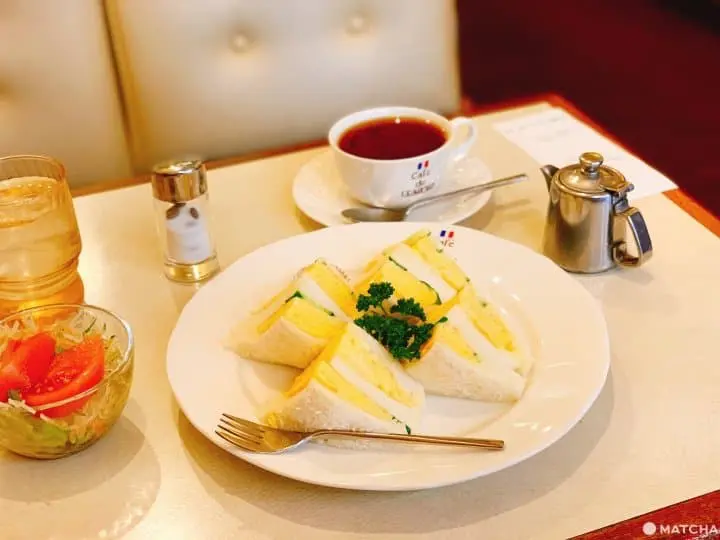
Located in Tokyo's old downtown area of Monzen-Nakacho, Espoir opened as a bakery about 50 years ago.
They've been selling boiled egg sandwiches here since the very beginning. After it was converted into a full-time coffee shop, Espoir started selling an egg sandwich filled with a fluffy omelet from two eggs.
When you take a bite, you'll notice a difference in the mayonnaise, which is not from store-bought brands. The sandwich also has a noticeably smooth taste. Then continue taking a bigger bite with both hands. It has a soft, moist texture, and the aroma of the egg mixture will spread in your mouth (Morning Egg Sandwich Set, 970 yen with tax).
3. Koppepan: The Flavor Possibilities Are Endless!
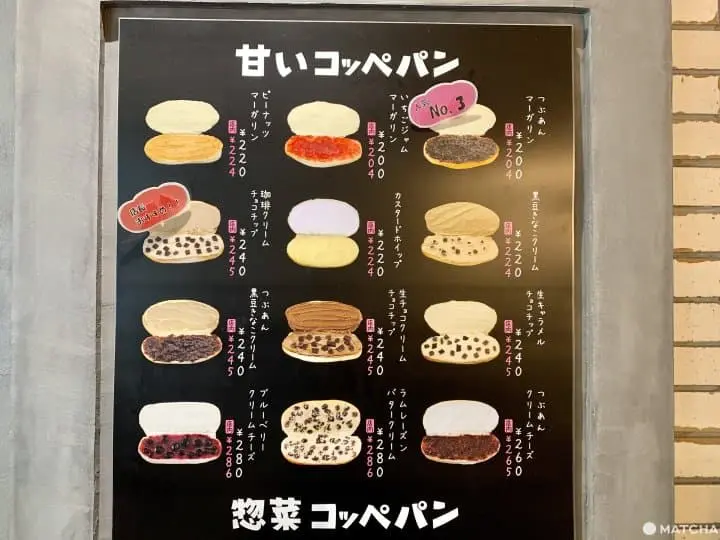
In recent years, koppepan (Japanese bread rolls) have become very popular in Japan. Upon first glance, the bread's exterior looks similar to an American hot dog bun. However, this unique version hatched in Japan was developed from testing various overseas bread recipes.
There are many different fillings used in koppepan. Some interesting variations include nikujaga-korokke pan (*1), tsubuan-margarine (*2), and strawberry jam with condensed milk. There are also no-fuss combinations like ham and lettuce.
For the older Japanese generation, koppepan was one of the main food served for school lunches. When senior citizens spot this soft bread roll sold across town, it brings back many fond memories.
Nowadays, white rice is usually served for school lunches in Japan. But the koppepan does make an occasional appearance.
*1 Nikujaga-korokke pan: nikujaga is a simmered dish of meat and potatoes. To make the sandwich, nikujaga ingredients are minced up and shaped into a croquette (or "korokke"), then coated with bread crumbs and fried before put in the koppepan.
*2 Tsubuan-margarine pan: tsubuan refers to sweet red bean paste. This variety of koppepan contains a coating of tsubuan and margarine.
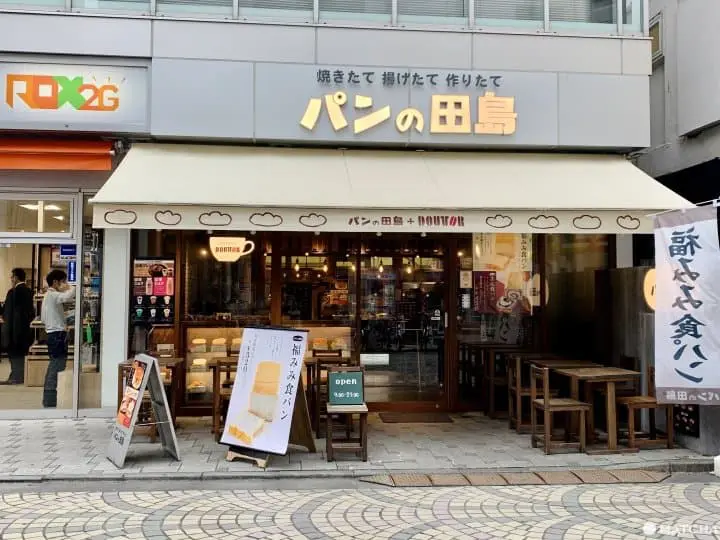
In eastern Japan, koppepan is typically slit open along the side of the bread after which the ingredients are inserted. But in western Japan, the top of the bread is usually sliced open.
Our writer often buys koppepan at Pan no Tajima Bakery in Asakusa, a popular tourist destination in Tokyo.
The shop's atmosphere is reminiscent of an elementary school. The menu is written on a blackboard and the staff wear Japanese-style aprons that look as if they're on lunch duty at school. Both adults and children can fondly look back on their school life when visiting here.
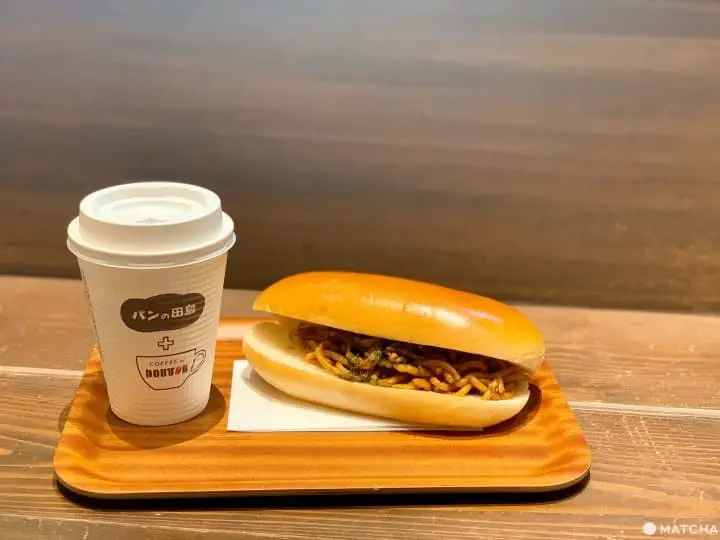
At Pan no Tajima, you'll find about 30 different varieties of koppepan.
Among these, we highly recommend the yakisoba pan. The soft bread is stuffed with pan-fried noodles and shredded cabbage drenched in a special sauce (see above photo). You'll be satisfied with both the taste and texture of this sandwich.
It's perfect for those who prefer a savory alternative from chocolate or strawberry flavors, and also makes an ideal lunch (305 yen including tax for eat-in).
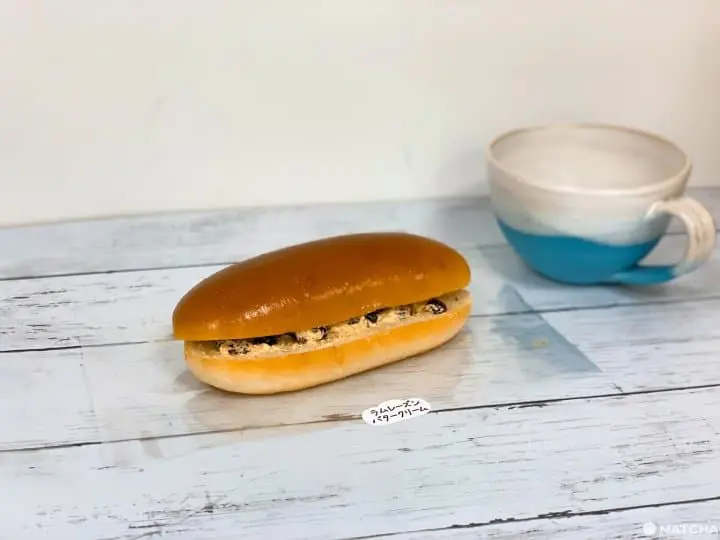
For an afternoon snack, the rum raisin buttercream koppepan featured above is also recommended. The flavor is especially enjoyed among adults because the raisins have the full-bodied aroma of the distilled liquor (286 yen with tax for eat-in).
4. Japan's Original Pizza Toast!
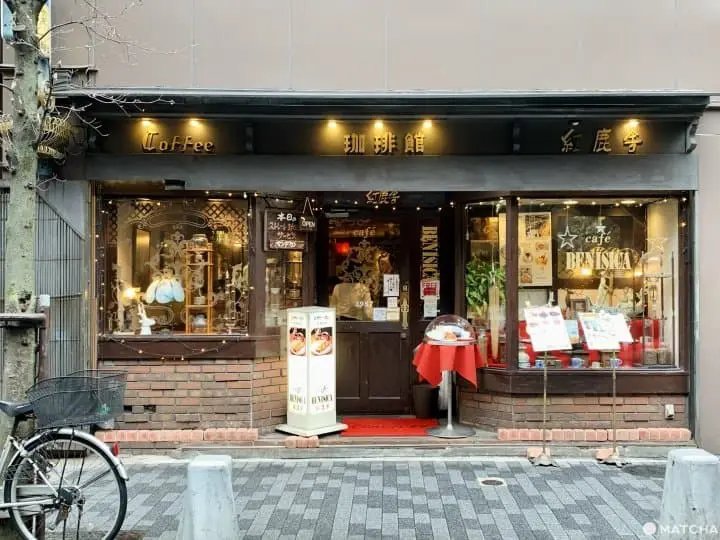
Pizza toast is a satisfying snack that can be enjoyed at anytime. This dish originated at Cafe Benisica, a long established coffee shop that opened in 1957 near the Hibiya neighborhood in Tokyo.
In the 1960s, pizza became popular among the general public, but going to an Italian restaurant was out of the price range for ordinary people. In other words, pizza was considered to be somewhat of a luxury. Thus, Cafe Benisica came up with the idea for pizza toast, and it soon appeared on menus across Japan.
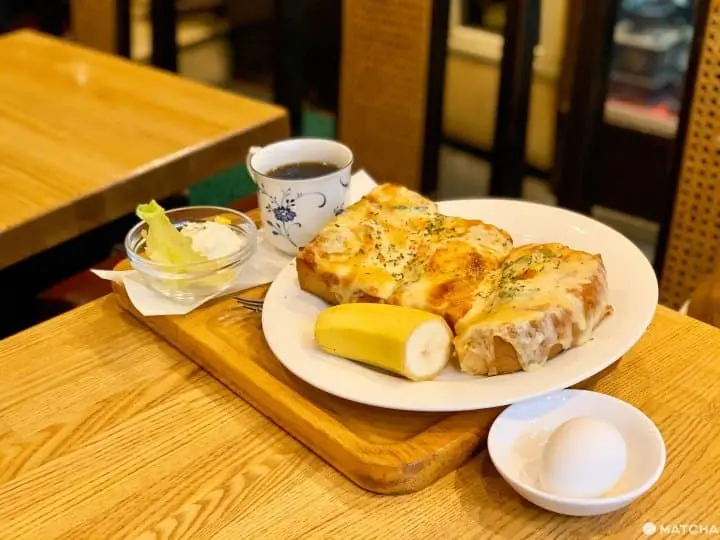
The pizza toast served here has a generous serving size. You'll first be captivated by the lightly salted, thick layer of cheese. The bread's thin crust is crunchy and contrasts with its soft, moist interior. You'll be able to gobble up an entire meal in no time with this irresistible flavor combination (Morning Set 1,250 yen including tax).
Enjoy Japan's Unique Breakfast Culture
After looking at today's breakfast lineup, which one would you like to try the most?
You'll be tempted to set your alarm a bit earlier after learning about these Japanese breakfast items that are beyond the basic. With a little time on your hands, why not go on a trip in search of the perfect morning meal?
MATCHA's latest news and updates! Facebook:Matcha - Japan Travel Web Magazine
Main image courtesy of Pixta













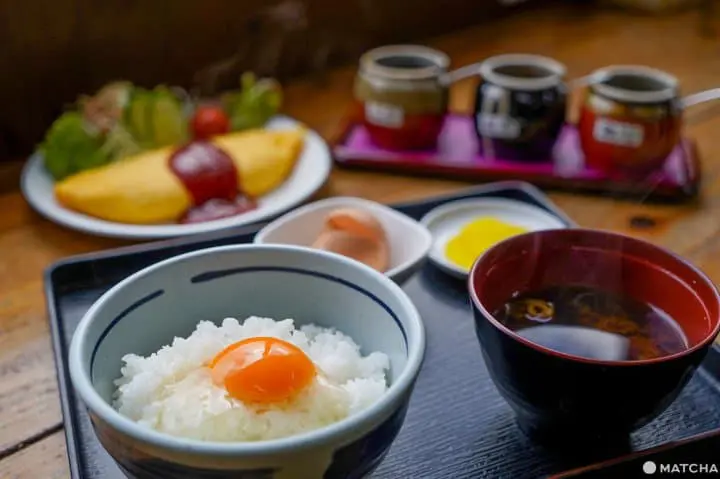



























![[Yufuin] From breathtaking views to skin-beautifying hot springs. A variety of day trip hot springs to fully enjoy Yufuin](https://resources.matcha-jp.com/resize/720x2000/2026/01/18-255919.webp)

![[2026] The Matsusaka Lantern Festival will be held to light up the winter night sky!](https://resources.matcha-jp.com/resize/720x2000/2026/01/05-254777.webp)
![[List of Traditional Industry Experiences] Factory tours and craftsmanship experiences in southern Osaka and Wakayama](https://resources.matcha-jp.com/resize/720x2000/2025/11/06-249221.webp)